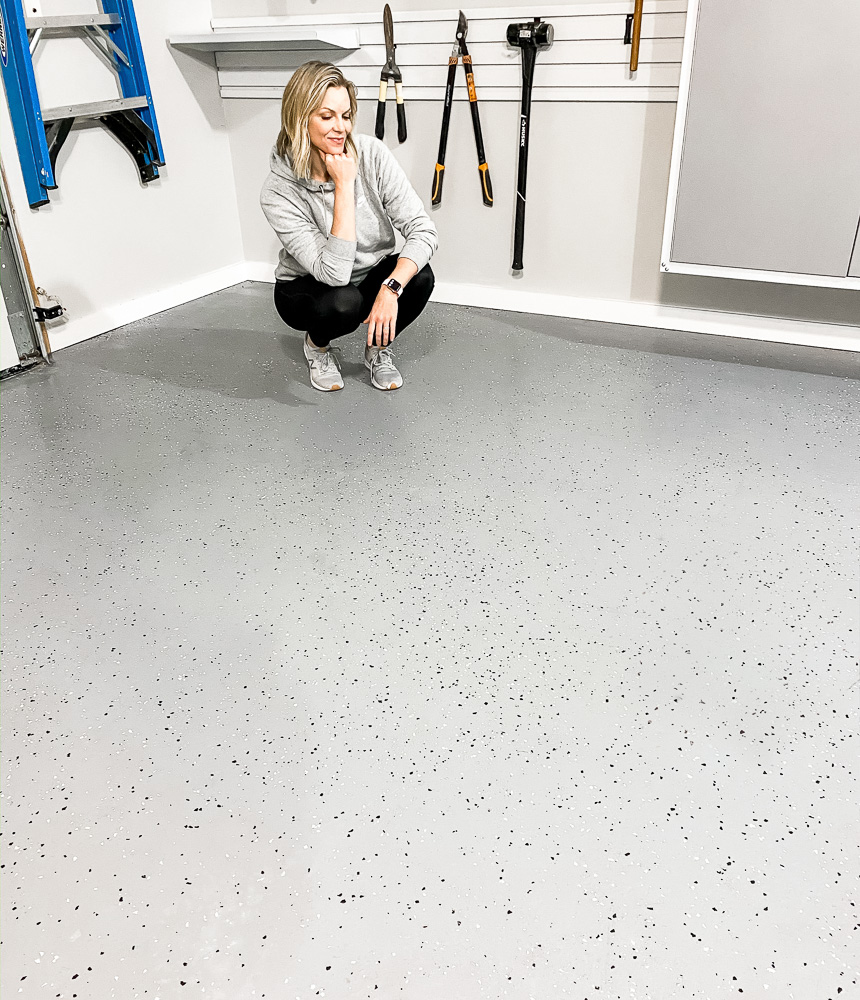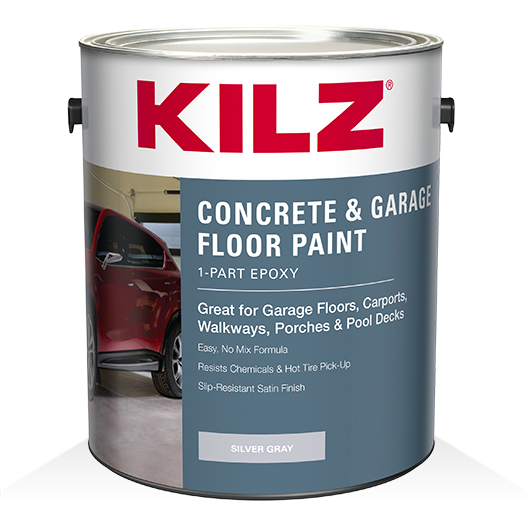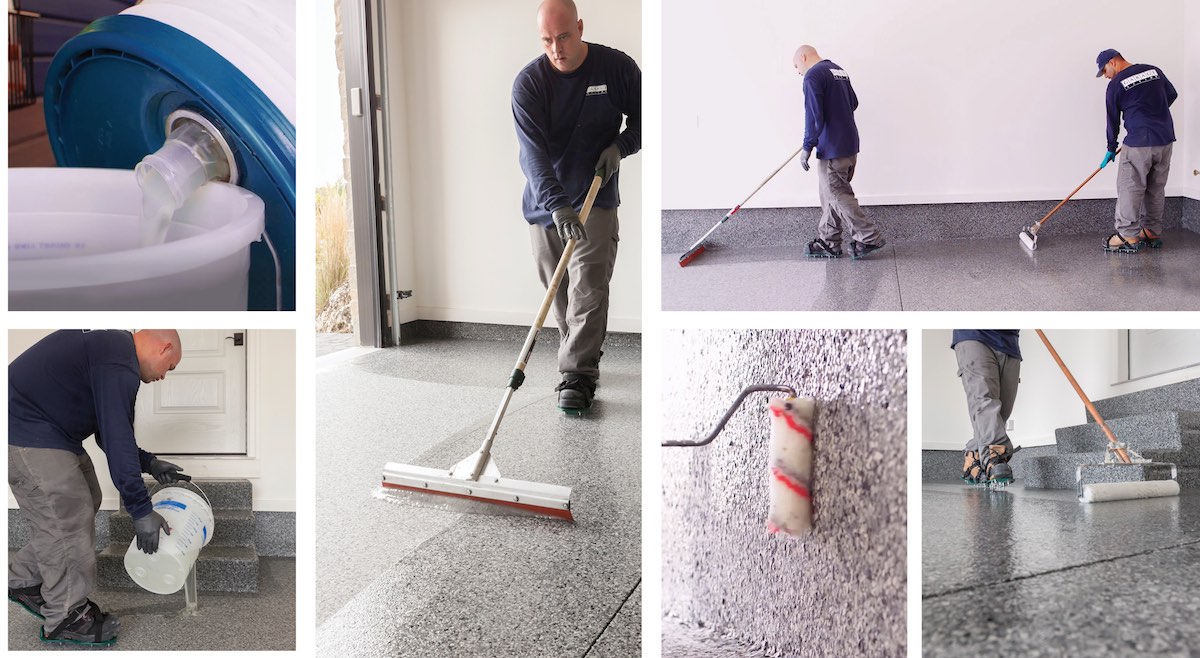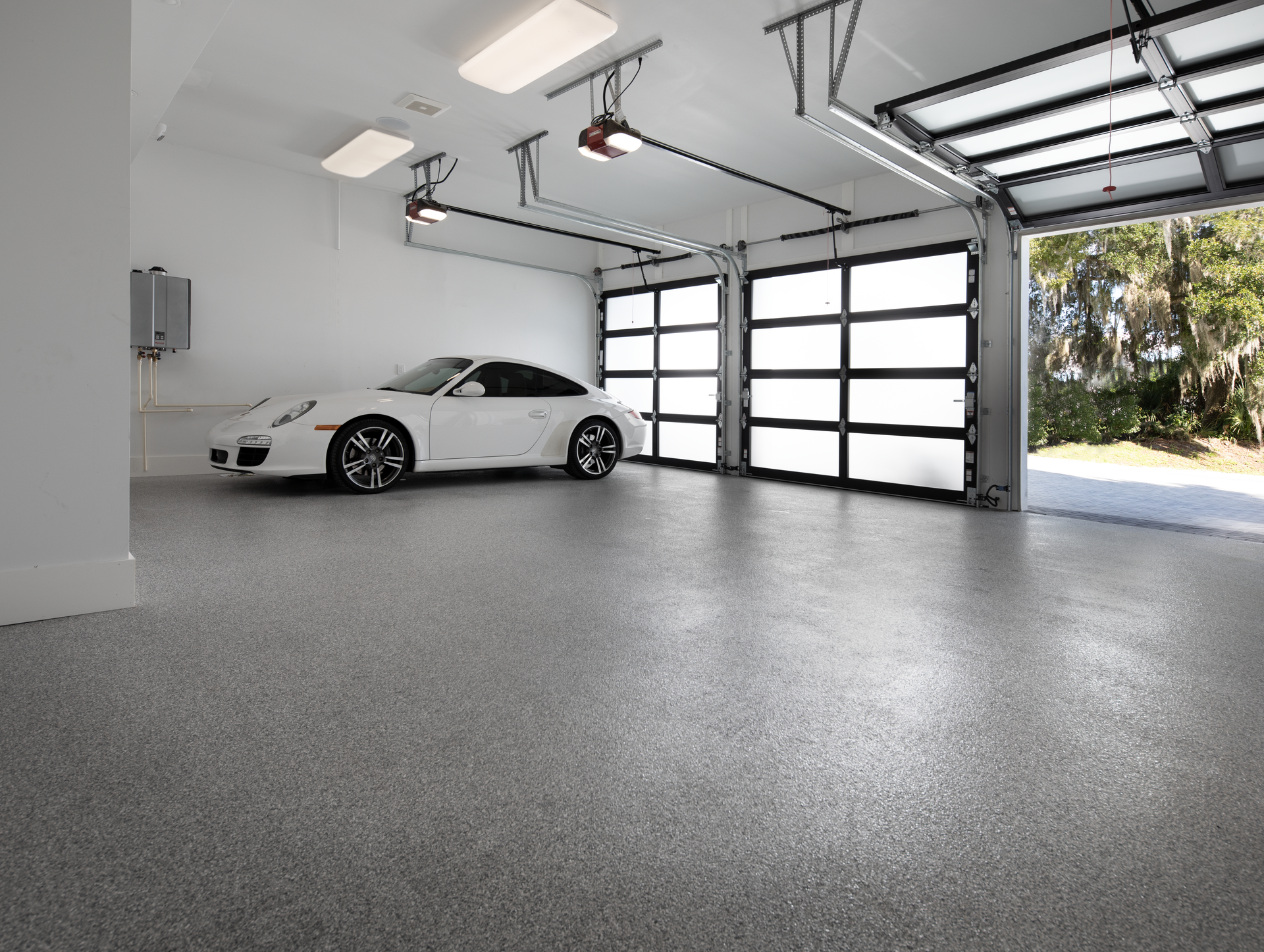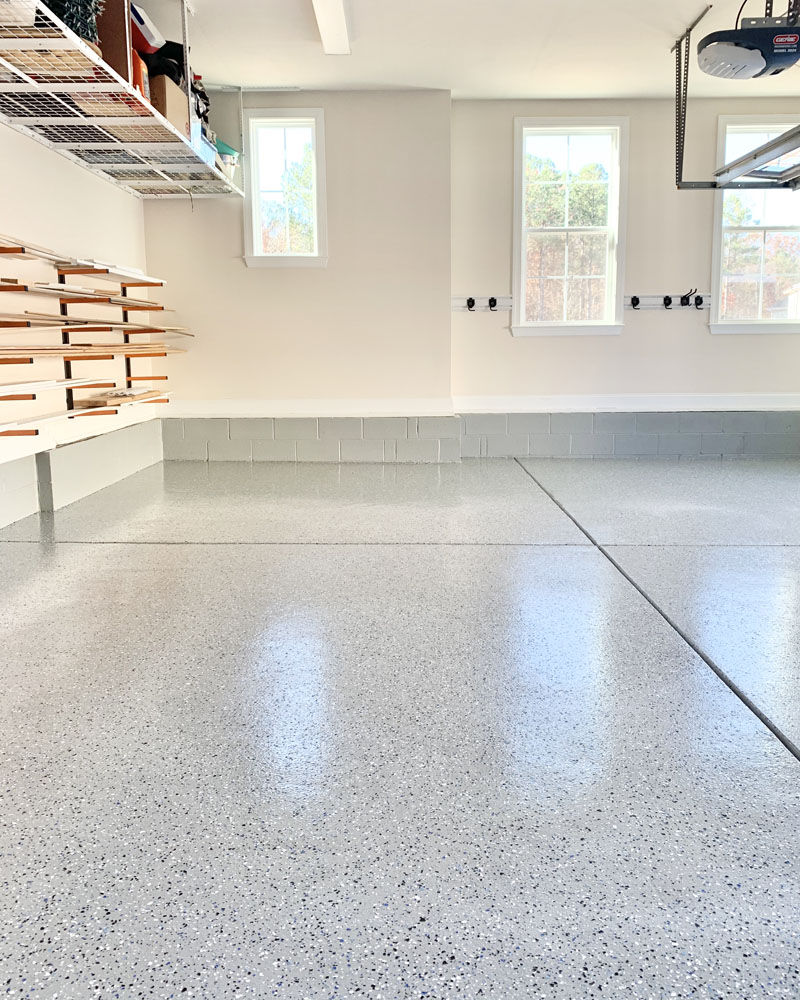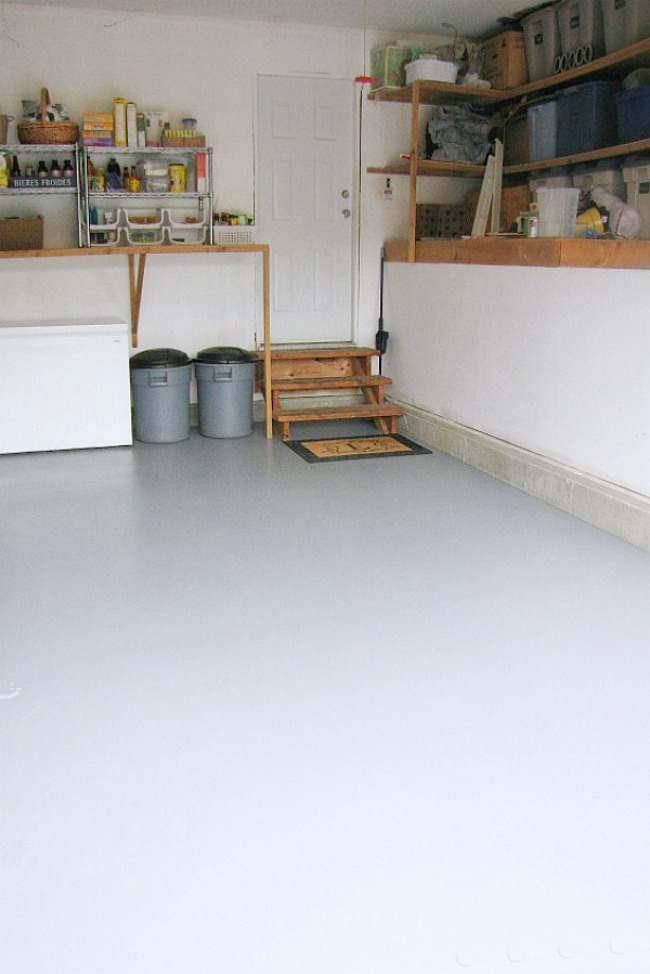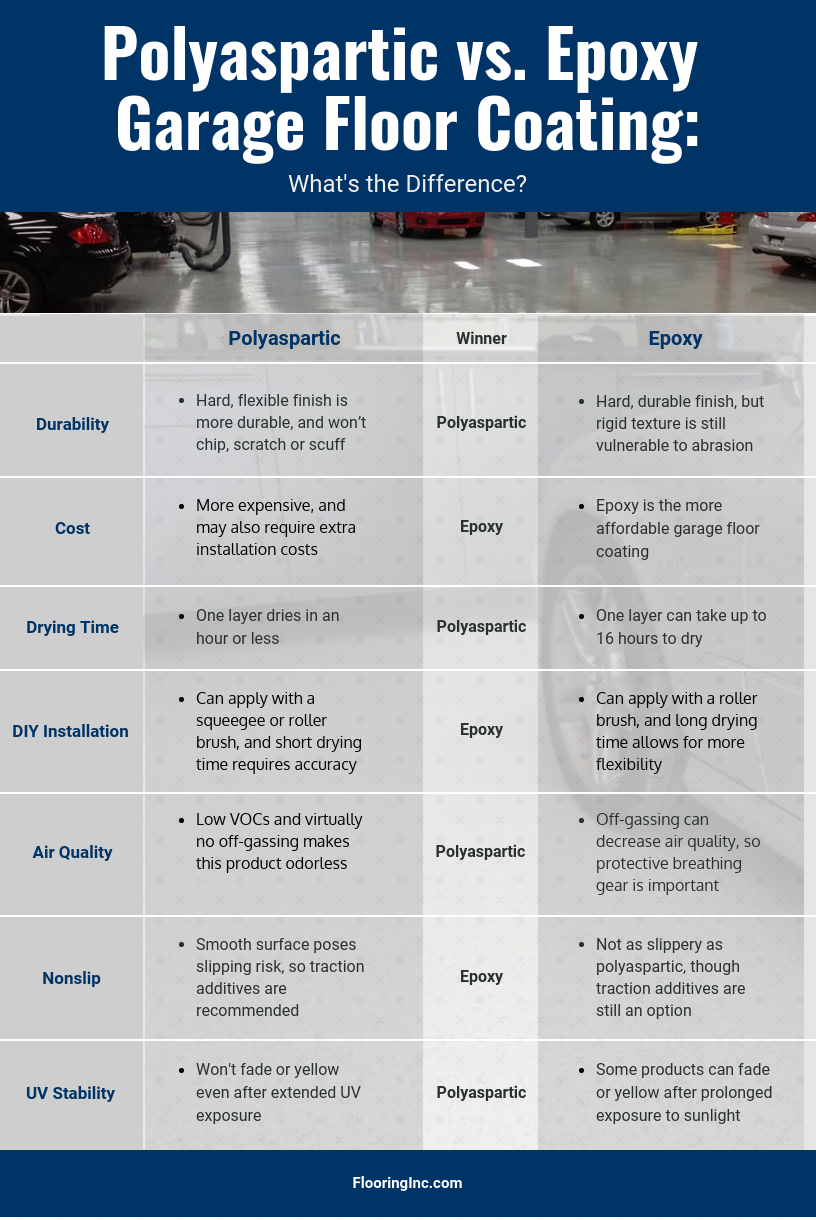The Importance of Temperature in Garage Floor Painting
When it comes to garage floor painting, temperature plays a crucial role in ensuring a successful and long-lasting result. The right temperature not only affects the application process but also the drying and curing of the paint. Let’s discuss why temperature is so important in garage floor painting and how it can impact the overall outcome.
- Proper Adhesion: One of the primary reasons why temperature is important in garage floor painting is because it directly affects the adhesion of the paint to the surface. If the temperature is too low, the paint may not bond properly, leading to peeling, flaking, or bubbling in the future. On the other hand, if the temperature is too high, the paint may dry too quickly, preventing it from adhering properly to the floor. Therefore, it is crucial to adhere to the recommended temperature range for optimal adhesion.
- Smooth Application: Temperature also plays a role in the ease of application. In colder temperatures, the paint may become thicker and more difficult to spread evenly, resulting in an uneven finish. On the contrary, in hotter temperatures, the paint may become thinner, leading to drips and runs. Maintaining the recommended temperature range ensures a smooth and consistent application, allowing for a professional-looking garage floor.
- Drying and Curing Time: The temperature affects the drying and curing process of the paint. If the temperature is too low, the drying time may be prolonged, leading to a longer wait before the floor can be used. On the other hand, if the temperature is too high, the paint may dry too quickly, preventing it from properly curing. Curing is essential for the paint to reach its maximum durability and resistance. Following the recommended temperature range ensures the paint dries and cures within the desired timeframe, providing a durable finish.
- Longevity of the Finish: The temperature during the painting process can impact the longevity of the garage floor finish. Extreme temperatures, whether too hot or too cold, can cause the paint to deteriorate faster over time. It can lead to cracking, chipping, or fading of the paint. By painting in the optimal temperature range, you can ensure that the finish will last longer, maintaining its appearance and functionality for years to come.
- Weather Conditions: Temperature is often intertwined with weather conditions. It is important to consider the outside temperature and humidity levels when planning a garage floor painting project. High humidity can affect the drying process, while excessive heat or cold can impact the adhesion and curing of the paint. Checking the weather forecast and selecting an appropriate time ensures that the temperature remains within the recommended range, increasing the chances of a successful outcome.
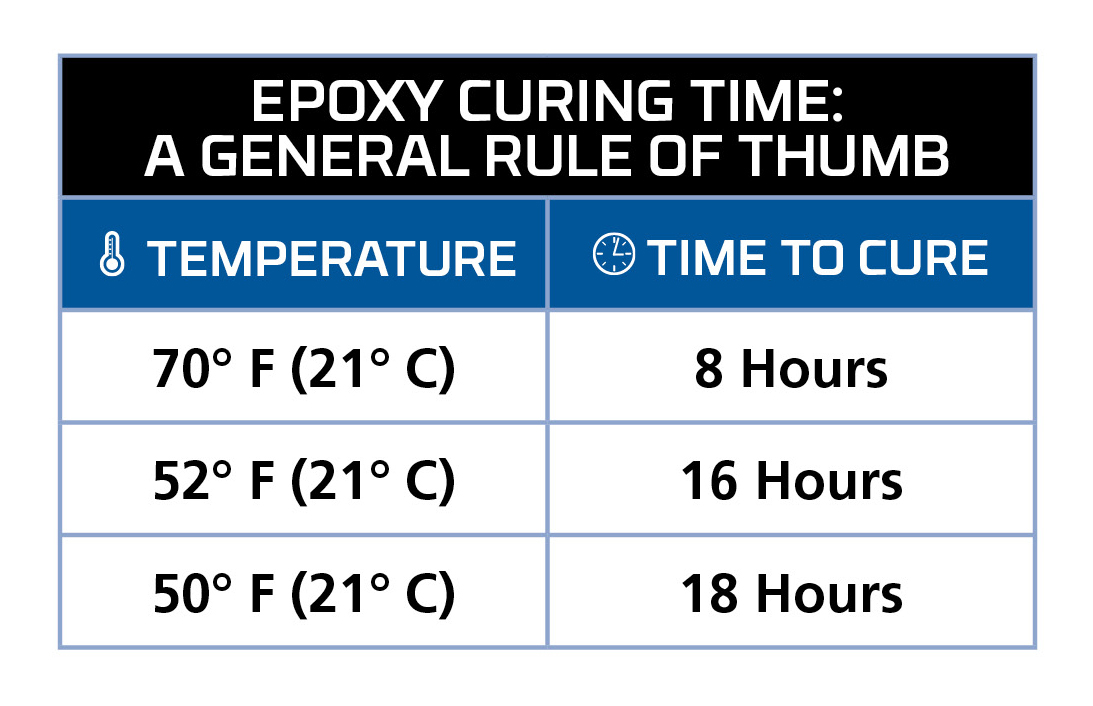
Optimal Temperature Range for Garage Floor Painting
Achieving the best possible results when painting your garage floor requires careful consideration of the temperature range in which you are working. We will learn about the optimal temperature range for garage floor painting and why it is crucial for a successful outcome.
- Recommended Temperature Range: The optimal temperature range for garage floor painting typically falls between 50°F (10°C) and 90°F (32°C). Within this range, the paint can adhere properly, dry at an appropriate rate, and cure effectively. It is essential to check the manufacturer’s guidelines for the specific paint product you are using, as some may have slightly different temperature recommendations.
- Too Cold: If the temperature falls below the recommended range, the paint may have difficulty adhering to the surface. Cold temperatures can cause the paint to become thicker, making it challenging to spread evenly. Additionally, the drying and curing process may be significantly delayed, leading to a prolonged wait time before the floor can be used. To avoid these issues, it is advisable to postpone the painting project until the temperature rises within the optimal range.
- Too Hot: Painting in excessively hot temperatures can also pose challenges. High temperatures can cause the paint to dry too quickly, leading to an uneven finish. The paint may also become thinner, resulting in drips and runs. Moreover, rapid drying can prevent the paint from properly adhering and curing, compromising the durability of the finish. If the temperature is above the recommended range, it is best to wait for cooler weather or consider painting during the early morning or late evening when temperatures are lower.
- Importance of Surface Temperature: In addition to the ambient temperature, it is crucial to consider the temperature of the garage floor surface itself. Concrete floors tend to retain cold or heat, so it is essential to ensure that the surface temperature is within the recommended range. If the floor is too cold, using a space heater or allowing it to warm up naturally can help. Conversely, if the floor is too hot, using a fan or opening windows to increase ventilation can help lower the surface temperature.
- Temperature Monitoring: To ensure the best results, it is advisable to monitor the temperature throughout the painting process. Use a reliable thermometer to measure the ambient temperature and periodically check the surface temperature of the floor. This allows you to make any necessary adjustments, such as waiting for the temperature to stabilize or using additional heating or cooling methods to achieve the optimal range.
Challenges of Extreme Temperatures in Garage Floor Painting
Extreme temperatures can pose significant challenges when it comes to garage floor painting. Below are some of the common challenges that arise when painting in extremely hot or cold temperatures and discuss strategies to overcome them.
Extremely Hot Temperatures: Painting in excessively hot temperatures can present several difficulties. Firstly, the paint may dry too quickly, making it challenging to achieve a smooth and even finish. To overcome this challenge, it is recommended to work in smaller sections and apply the paint in thin coats. This allows for better control and minimizes the risk of drips and uneven coverage.
Heat-Induced Blisters: Another challenge of painting in extreme heat is the formation of blisters or bubbles on the painted surface. This occurs when the paint dries too quickly, trapping air or moisture beneath the surface. To prevent blistering, it is important to choose a high-quality paint that is specifically formulated to withstand high temperatures. Additionally, painting during cooler parts of the day or using shade can help minimize heat-related issues.
Extremely Cold Temperatures: Painting in cold temperatures can also present its own set of challenges. Cold weather can cause the paint to thicken, making it difficult to apply smoothly. To overcome this, it is recommended to warm the paint before application. Placing the paint cans in a warm room or using a paint warmer can help maintain the proper consistency and improve the ease of application.
Slow Drying and Curing: In cold temperatures, the drying and curing times of the paint are significantly extended. This means that it may take much longer for the painted surface to become usable. To accelerate the drying process, consider using heaters or fans to increase air circulation and raise the ambient temperature slightly. However, it is important to ensure proper ventilation when using heating devices.
Moisture and Condensation: Extreme temperature fluctuations can lead to moisture and condensation issues, especially when painting in cold and humid conditions. Moisture can prevent the paint from adhering properly and cause it to peel or bubble over time. To minimize moisture-related problems, ensure that the garage is well-ventilated during the painting process. Using dehumidifiers or fans can help reduce excess moisture in the air.
Tips for Adjusting Temperature for Successful Garage Floor Painting
When it comes to garage floor painting, adjusting the temperature to the optimal range can greatly contribute to the success of your project. Let’s discuss some helpful tips for adjusting the temperature to ensure a successful garage floor painting experience.
Timing is Key: Choosing the right time to paint your garage floor can make a significant difference in achieving the desired temperature range. If you live in an area with extreme temperatures, consider painting during the milder seasons when temperatures are more moderate. Additionally, scheduling your painting project for early morning or late evening can help avoid the peak heat of the day.
Preparing the Environment: Before painting, it is important to prepare the garage environment to help adjust the temperature. If the temperature is too cold, consider using portable heaters to warm up the space. Conversely, if the temperature is too hot, use fans or open windows to increase ventilation and create air movement. These adjustments can help bring the temperature closer to the optimal range for painting.
Utilize Shade and Sunlight: If you are painting in hot weather, using shade to your advantage can help regulate the temperature. Position your painting area in a shaded spot or use umbrellas to create shade over the work area. On the other hand, if you are painting in cold weather, positioning the work area in direct sunlight can help raise the ambient temperature and facilitate drying.
Temperature-Controlling Tools: Investing in temperature-controlling tools can be beneficial for adjusting the temperature during garage floor painting. For instance, using space heaters or infrared heaters can help warm up the space in cold weather. Additionally, using portable air conditioners or fans can help cool down the area in hot weather. These tools provide better control over the environment and allow you to work within the optimal temperature range.
Follow Manufacturer’s Guidelines: It is crucial to follow the manufacturer’s guidelines for the specific paint product you are using. Different paints may have different temperature requirements for optimal application and drying. Take the time to read the instructions and recommendations provided by the manufacturer to ensure that you are adjusting the temperature within the appropriate range.
Common Mistakes to Avoid When Painting a Garage Floor in Different Temperature Conditions
Painting a garage floor requires careful attention to temperature conditions to ensure a successful outcome. Let’s discuss common mistakes to avoid when painting a garage floor in different temperature conditions. By being aware of these mistakes, you can prevent issues and achieve a professional-looking finish.
Ignoring Temperature Guidelines: One of the biggest mistakes is ignoring the recommended temperature guidelines provided by the paint manufacturer. Each paint product has specific temperature requirements for proper adhesion, drying, and curing. Failing to follow these guidelines can lead to poor paint performance and a shorter lifespan for the finish. Always read and adhere to the temperature specifications provided by the manufacturer.
Painting in Extreme Temperatures: Painting in extreme temperatures, whether too hot or too cold, can cause numerous problems. In hot temperatures, the paint may dry too quickly, leading to an uneven finish and a higher risk of blisters or bubbles. On the other hand, in cold temperatures, the paint may not adhere properly or take an extended time to dry and cure. It is best to avoid painting when the temperature is outside the recommended range.
Rushing the Application Process: Another common mistake is rushing the application process due to impatience or time constraints. This often happens when the temperature is on the higher side, and the paint appears to dry quickly. However, it is important to follow the recommended drying time between coats and allow sufficient curing time before using the garage floor. Rushing the process can result in a weak finish that is prone to damage and premature wear.
Neglecting Surface Preparation: Surface preparation is crucial for a successful garage floor painting project, regardless of the temperature. Neglecting proper cleaning and preparation can lead to poor paint adhesion, leading to issues such as peeling and chipping. Ensure that the floor is thoroughly cleaned, and free of dust, dirt, and grease. Repair any cracks or imperfections and consider using a primer to enhance adhesion.
Overlooking Humidity Levels: Humidity levels can have a significant impact on the drying and curing process of the paint. High humidity can slow down drying, leading to an extended wait time before the floor can be used. On the other hand, low humidity can cause the paint to dry too quickly, resulting in an uneven finish. It is important to consider humidity levels and choose a day with moderate humidity for optimal results.
Improper Ventilation: Proper ventilation is essential during the painting process, regardless of the temperature. Insufficient ventilation can lead to a buildup of fumes and affect the drying process. Ensure that the garage is well-ventilated by opening windows or using fans to promote airflow. This helps to expel fumes and accelerate the drying process.
DIY Epoxy Garage Floors
Applying Epoxy Floor Coating in Cold Temperature
How to Paint a Garage Floor – Clean and Scentsible
Polyaspartic vs. Epoxy Garage Floor Coating – Flooring Inc
Related Posts:
